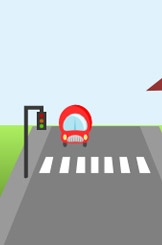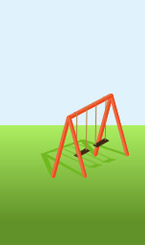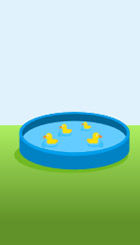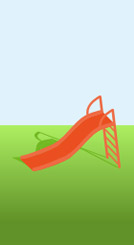Playground Safety
PLAYGROUND INSPECTIONS
Building on our belief that playground injuries can be prevented or their severity reduced through careful planning, design and maintenance, we have set up a playground inspection service run by Level 3 Accredited Playground Inspector, Geoff Lucas.
We are taking bookings for playground Inspections to assess the safety of the equipment, foundations and playground surfaces and to measure their compliance with Australian Standards AS4685 and AS4422. Enquiries welcome. POA.
Services to be offered:
- Routine Visual Playground Inspections (Frequency as agreed)
- Operational Playground Inspections (Generally Quarterly)
- Comprehensive Annual Playground Inspections
- Comprehensive Post Installation Playground Inspections
- Telephone/email playground advisory service
- Information and resources - website, information sheets, publications
- Playground Consultation & Review of Plans service
- Training, workshops, seminars
Ph: Geoff Lucas 0417 352 264
Email: blacksnake3@bigpond.com
THE IMPORTANCE OF PLAY
Play is an essential part of childhood; it helps children to develop physical strength, coordination and balance. Appropriate play can also provide children with opportunities to learn and develop:
- Social skills, including learning to communicate, share, collaborate and empathise with others.
- Imagination and creativity through deciding what games they play and how the games will be played.
- Problem solving skills as they assess risks and tackle new challenges.
- A sense of self as they master new skills and play with other children which brings about an improved confidence in their own physical and social abilities, and;
- A sense of connection to place, to friends and to their local community and environment.
Injuries can occur during play which means that safety precautions do need to be taken into consideration. However, safe play does not have to mean boring! Play should provide children with a fun and exciting experience that allows them to explore and challenge themselves.
PLAYGROUND HAZARDS
A playground hazard is anything in a playspace that has the potential to cause serious injuries. Hazards differ from challenges and risks - children need opportunities to experience risk and challenge in playgrounds.
Common playground hazards include:
- Hard surfaces under equipment
- Inadequate fall zones and playground surfacing
- Lack of maintenance, broken or faulty equipment
- Inadequate supervision
- Potential entrapment hazards
- Pinch points and sharp edges
- Protrusions and tangling hazards
- High platforms without barriers
- Inappropriate use or play
- Trip hazards
- Overcrowded play areas, and;
- Contamination with dangerous items such as broken glass and syringes
Careful planning, design and maintenance can assist in avoiding these hazards and preventing or reducing the severity of playground injuries.
AUSTRALIAN PLAYGROUND STANDARDS
There are a number of Australian Standards pertaining to Playgrounds and Playground Equipment. You can purchase copies of these Standards from SAI Global.
Australian and New Zealand Standard AS/NZS 4486.1: Playgrounds and playground equipment
Part 1: Development, installation, inspection, maintenance and operation.
Australian and New Zealand Standard AS/NZS 4422: Playground surfacing - Specifications, requirements and test methods
Australian Standard AS 1428: Design for access and mobility
Part 1 - General requirements for access - New building work
Part 2 - Enhanced and additional requirements - Building and facilities
Part 3 - Requirements for children and adolescents with physical disabilities
Part 4 - Means to assist the orientation of people with vision impairment – Tactile ground surface indicators
Part 5 - Communication for people who are deaf or hearing impaired
Australian Standard AS 4685: Playground equipment
Part 1 – General safety requirements & test methods
Part 2 – Particular safety requirements & test methods for swings
Part 3 - Particular safety requirements & test methods for slides
Part 4 - Particular safety requirements & test methods for runways
Part 5 - Particular safety requirements & test methods for carousels
Part 6 - Particular safety requirements & test methods for rocking equipment
Part 11 - Particular safety requirements & test methods for spatial networks
Australian and New Zealand Standard AS/NZS ISO 31000: Risk management - Principles and guidelines
Australian Standard AS 4989: Trampolines - Safety aspects
Australian Standard AS 3533.4.2 - 2013 Amusement rides and devices
Part 4.2: Specific requirements-Contained play facilities
Fact Sheets:
- Backyard (PDF)
- Prams & Strollers (PDF)
- Heat Stress (PDF)







